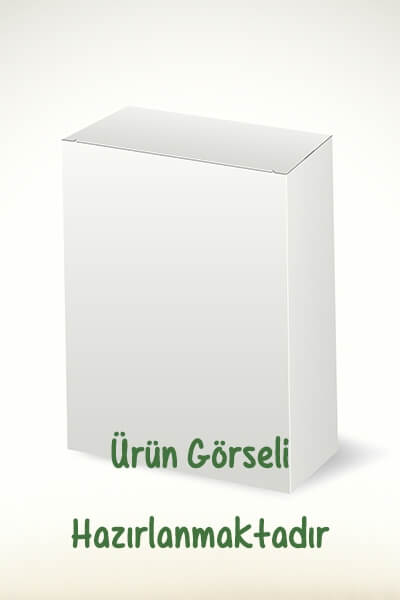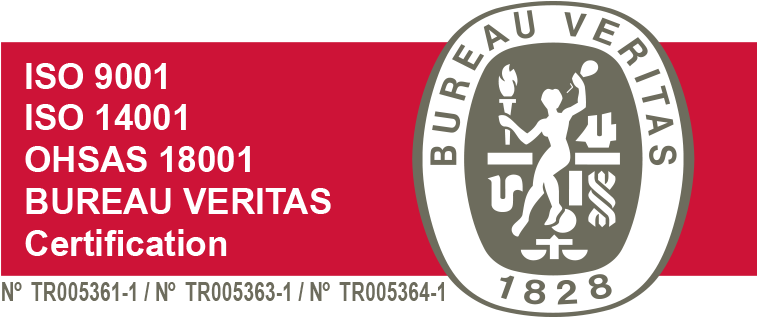Product Certificate and Label
| Name of The Product | : LARAFAB |
| Active Substance | : % 25 Tebuconazole |
| Formulation Type | : Wettable Powder (WP) |
| Group | : G1:3 FUNGICIDE |
| Environmental Impact | : Toxic for bees and fish. |
| Antidote | : No special antidote. Symptomatic treatment is applied. |
Market Presentation: 600 G
PREPARATION OF THE PLANT PROTECTION PRODUCT TO BE APPLIED
First, the Plant Protection Product scaled on recommendation dose is mixed with a small amount of clean water in a separate container. The application machine tank is filled halfway with water. The mix is added to the tank while the mixer is running. Mixing is continued while the tank is completed with water. Mixing is continued until the application is completed. Use the prepared plant protection product the same day.
CALIBRATION
Calibration of the machine should be done before application. The amount of mixture should be calibrated for a good covering. Application should be performed during the cool period of the day in windless or less windy weather conditions.
CLEANING OF THE APPLICATION MACHINE
Safely empty the storage of the application machine immediately after the application is completed. After filling the tank with clean water, start the mixer and spray system to ensure that all parts are washed. Do not wash near water sources. Do not drain washing water and waste into water sources.
MISCIBILITY
It is usually not mixed with highly acidic and basic formulations.A premixture test is recommended before mixing the product with other plant protection products.
USAGE OF PLANT PROTECTION PRODUCT
Wheat Yellow Rust:
Applications should be started when symptoms of the disease are observed. Green part is applied against rust factors. The application should be performed so that the surface of the leaves and stem is covered with the mixture. Applications are continued at intervals of 10-14 days if necessary, taking into consideration climatic conditions and the state of the disease.
Wheat Septoria Leaf Spot:
If the climatic conditions are suitable for the progress of the disease and there is a possibility of an epidemic situation, green assembly is applied. In general, the best time for application is at the end of the scabbard period, when the flag leaf is fully blooming, or before the spike period. It should not be expected that the flag leaf will come out for an infection that progresses towards the upper parts of the plant at an early stage. In the same way, if the field is dirty and rainy weather continues during the spike period, it may be necessary to apply, as there may be economic damage.
Apple Mildew:
1th application: is performed during the time pink flower bud,
2nd application: is performed when flowers’ petals fall % 60-70,
3rd and other applications: are continued to perform at intervals of 10 days, taking into account the duration of action of the plant protection product used, as long as conditions suitable for the disease continue.
Apple Black Spot
1th application: is performed at the stage when flower buds are about to swell up (in places where there is a branch row, it is done 3-5 days before).
2nd application: is performed at the stage when buds get pink (when flowers can be seen separately).
3rd application: It is performed when petals of the flower corolla fall by 70-80%,
4th and other applications: it is performed at the intervals of 15 days according to the weather conditions and level of disease.
Tomato Early Blight:
Both the seedling and the application in the field environment should be started as soon as the first blight is observed. When the climatic conditions are suitable for the development of the disease, the application is continued at intervals of 10-14 days according to the course of the disease and climatic conditions.
Pear Black Spot:
1th application: is performed at the stage when flower buds about to swell up (in places where there is a branch row, it is done 3-5 days before),
2nd application: is performed at the stage when rosettes get white.
3rd application: It is performed when petals of the flower corolla fall by 70-80%,
4th and other applications: it is performed at the intervals of 10 days in cases where ecological conditions are suitable for the progression of the disease.
Cercospora Early Leaf Spot On Peanuts:
In places where the disease is seen every year, it starts 4-5 weeks after the plant period and can be continued until harvest.
Phytophthora Root and Root Throat Rot in Pomegranate:
The application is performed together with planting as a preservative. When the first symptoms appear in the gardens where the disease is observed, applications are started and continued during the periods of rapid shoot development (spring, summer, autumn).
RESISTANCE MANAGEMENT
LARAFAB named plant protection product, according to its mechanism of action, is a fungicide classified as Group G1:3. Repetitive applications of plant protection products with the same mechanism of action, encourages the development of resistance. Hence, do not exceed the total number of applications recommended during the same season of LARAFAB to delay development of resistance. In cases where the application needs to be repeated, take care to use plant protection products with different mechanisms of action (group G1:3 External).
| PLANTS AND HARMFUL ORGANISMS WHICH IT IS USED | |||
| PLANT NAME | NAME OF HARMFUL ORGANISMS | USAGE DOSAGES | PERIOD BETWEEN THE LAST APPLICATION AND THE HARVEST |
|
Apricot |
Flower monilia on stone fruit |
60 g / 100 L water | 14 days |
|
Wheat |
Septoria leaf spot |
75 g / da | 35 days |
|
Wheat |
Yellow Rust |
75 g / da | 35 days |
| Apple | Mildew (Podosphaera leucotricha |
25 g / 100 L water | 14 days |
| Apple | Black Spot (Venturia inaequalis) |
25 g / 100 L water | 14 days |
| Tomato | Early Blight (Alternaria solani) |
50 g / 100 L water | 7 days |
| Pear | Black Spot (Venturia pyrina) |
25 g / 100 L water | 14 days |
| Peanut | Cercospora early leaf spot on peanuts (Cercospora arachidis) |
50 g/ da | 14 days |
| Pomegranate | Phytophthora root and root throat rot (Phytophthora spp |
60 g / 100 L water | 14 days |




